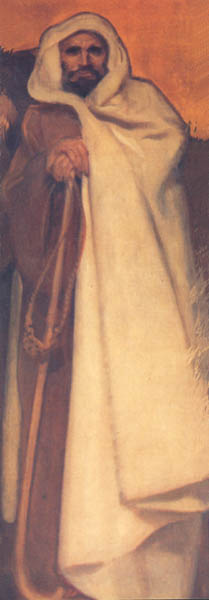Image Details

Courtesy of the trustees of The Boston Public Library
The Prophet Amos holds a shepherd’s tall crook, a mark of his calling. Before the abrupt beginning of his prophetic ministry in the mid-eighth century B.C., Amos cared for his flocks and grew figs in the Judean village of Tekoa, ten miles south of Jerusalem.
Using the vivid imagery of a man of the land, Amos prophesied about God’s anger and judgment during the reigns of Uzziah and Jeroboam II—a time when the Assyrians had established a relationship with Israel. In Israel, a wealthy merchant class had developed, sharpening the divisions between rich and poor. Amos criticized the existing social order and prophesied that God’s displeasure with it would cause him to “raise up against you a nation.” Amos probably didn’t live to see his prophecy fulfilled in 722 B.C. when the Assyrians conquered the northern kingdom of Israel and sent the Israelites into permanent exile.
How long Amos preached is unknown. It may have been only a few months or less. But according to David Noel Freedman, one mark of Amos’s short ministry is that, along with Moses, Amos is the only other prophet who intercedes with God and obtains God’s repentance.
The “Frieze of the Prophets,” by John Singer Sargent, of which Amos is a detail, shows 16 other Old Testament prophets as well. It was commissioned in 1890 to decorate the upper walls of a large hall on the third floor of the Boston Public library. The 38-foot-long, 7-foot-wide oil painting in five panels—lining the walls about 10 feet above eye level—portrays the prophets slightly larger than life.
